M-LAG as an alternative to STP and stack
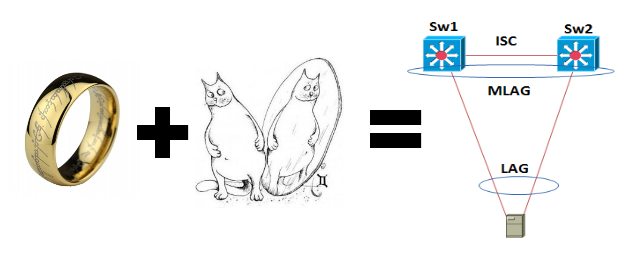
One of the main problems in the network are "loops" and "single point of failure".
The traditional way to win "loops" is to use the protocol STP. But at the same time, this protocol brings the problem of inefficient use of the bandwidth of ports and switch links. If there are several possible links, one will be active, anyway, that buying a cool and expensive computer home for playing Solitaire Klondike solitaire will not use the full potential of the device. Low convergence, especially in complex topologies. And if the network runs a voice or streaming video? The path between two adjacent switches can go through the root - is not optimal.
')
The traditional way to get away from the “single point of failure” and make the network fault tolerant is to use a stack. Do not argue, the option is good, but all the same a number of questions arise: what will be the time of convergence when the master-node fails? Will there be enough bandwidth between the switches (we want more speed - we pay more)? How will the stack behave with a split-brain? About this under the cut.
Extreme Networks - M-LAG technology can solve these problems and questions successfully.
In fairness it is worth mentioning that there are similar technologies from other manufacturers, but with some differences. Also, combinations are often used, for example: stack + M-LAG.
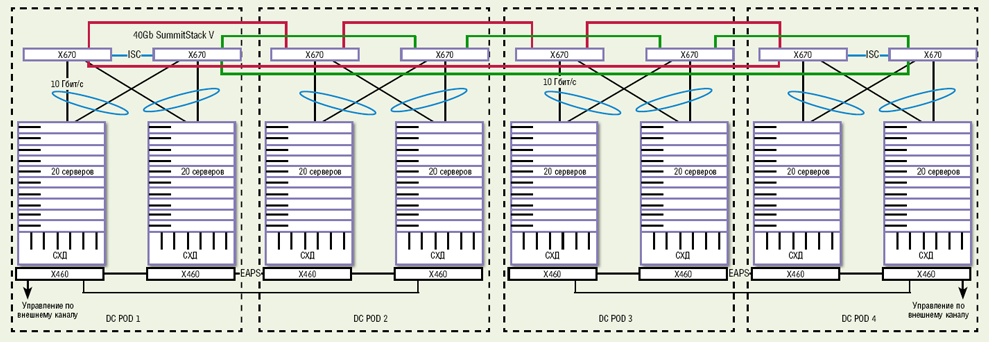
In this article, we will look at M-LAG from Extreme Networks as a separate technology.
M-LAG - Multi-Chassis Link Aggregation, a modification of the usual aggregation. The difference and advantage is that in this case the links start on one device, and end on two, that is, not only the link reservation in the LAG, but also the backup device.

From the Device1 side, the usual LAG is configured, from the Device2 and Device3 side everything is a bit more complicated.
Let's take a look at how M-LAG works.
There must be a link between Device2 and Device3 on which ISC (Inter-Switch Connection) is configured.
ISC covers several tasks:
1. Since the Device1 is configured with LAG, then, depending on the balancing algorithm, packets can be transmitted to different switches. Since these are 2 different switches, the data plane of each works independently - both links are loaded. But we need the synchronous and joint operation of the control plane of both devices (synchronization of the switching tables), for this we need an ISC (Inter-Switch Connection).
2. From the figure it is clear that we have organized a “loop”. ISC blocks client traffic during normal operation if there are no link drops or switch failures.
Also, it is worth mentioning the M-LAG feature: the switches between which the ISC is configured must be of the same manufacturer, moreover, it is strongly recommended that these switches be of the same type and series, with the same ExtremeXOS version. In addition, it is desirable to use switches with the same number of ports, for example: Summit X460-24t & Summit X460-24x; BlackDiamond 8900-G48X-xl & BlackDiamond 8900-G48T-x. At the same time, downstream or upstream devices on which the LAG is configured can be from different manufacturers.
In fairness, you need to specify that at the moment you can configure 1 M-LAG peer, but at the same time the number of M-LAGs for each pair of switches can reach 768.
M-LAG is supported by all Extreme Networks switches with the exception of L2 switches.
This all refers to the normal operation of the M-LAG. But what happens when the fault appears?
Consider several options for failure:
1. The failure of one of a pair of switches:
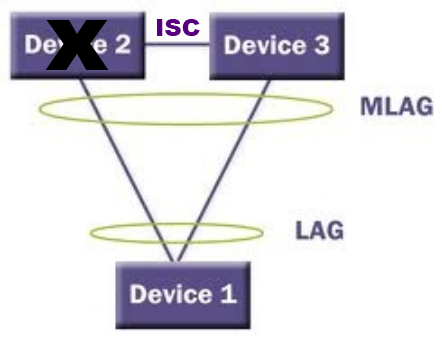
In this case, everything is simple - all traffic will flow smoothly to the link between Device1 and Device3.
2. Failure of the link between Device2 and Device1
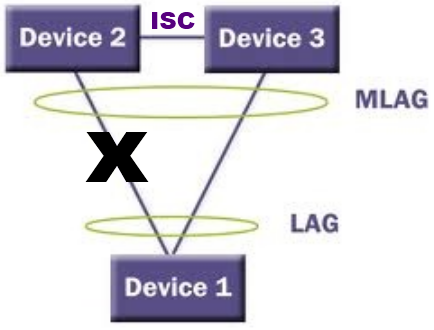
This is where ISC opens and traffic is redirected through it. To eliminate this failure, the scheme is used when on such links, for example: a LAG is configured between Device2 and Device1

3. ISC failure (the so-called split-brain)
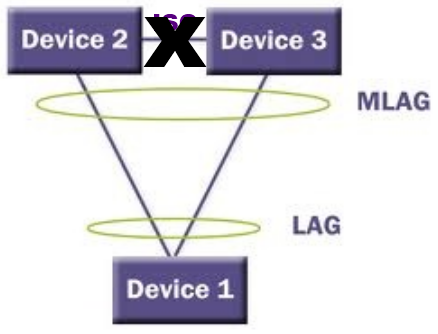
In this case, Device1 will not be aware of the failure. ISC, Device2 and Device3 will retain their System Identifier, traffic from Device1 will be sent according to the balancing algorithm, and Device2 and Device3 will direct traffic according to their switching rules.
At the same time, in order to eliminate the problem of the disappearance of the ISC link, the LAG is configured on it:

Having assembled a stand, we can see the time of convergence in the imitation of failures.

When experimenting:
1. Links between Summit X440-48t and X460-24x, X460-24t were disabled
2. Links between Summit X460-24p and X460-24x, X460-24t were disconnected
3. The ISC link between X460-24x and X460-24t was disabled.
Extreme Networks states that the convergence time is:

Let's try to run PING from one PC to another, when setting the ICMP Echo 50ms interval:
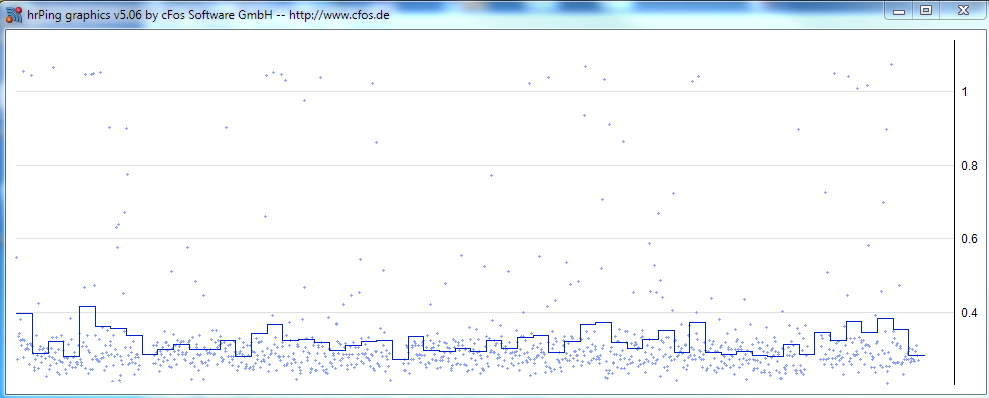
It can be seen that the convergence time is no more than 50 ms.


Moreover, the data are shown when the LAG link fails, and when the ISC link disappears, no packet loss was observed at all.
But we do not give up and we will look at the ICMP Echo = 10ms interval:



When the LAG link disappears, the convergence time is 40-70 ms, and when the ISC disappears, packet loss is not observed again.
In my opinion, the test results showed remarkable convergence values for failures, and better STP.
From which we conclude: M-LAG is an excellent alternative to the well-established STP and Stacking technologies, is easy to configure, and does not require additional investment, is not licensed, is available in the ExtremeXOS base license.
Conclusion:
I would like to note that M-LAG is an excellent technology that has a huge range of applications, but it is not a “pill for all diseases”, so you can apply it in conjunction with the same STP and stack. It all depends on the network topology and the tasks that are set for it. Also, there are promising, more interesting, in my opinion, solutions such as TRILL (Transparent Interconnection of Lots of Links) or SDN (Software-Defined Networking), which is gaining in popularity, but this is a separate topic for the article. And Extreme Networks switches have support for these technologies.
Contact info
All additional questions: extreme@muk.ua
MUK-Service - all types of IT repair: warranty, non-warranty repair, sale of spare parts, contract service
Source: https://habr.com/ru/post/225479/
All Articles